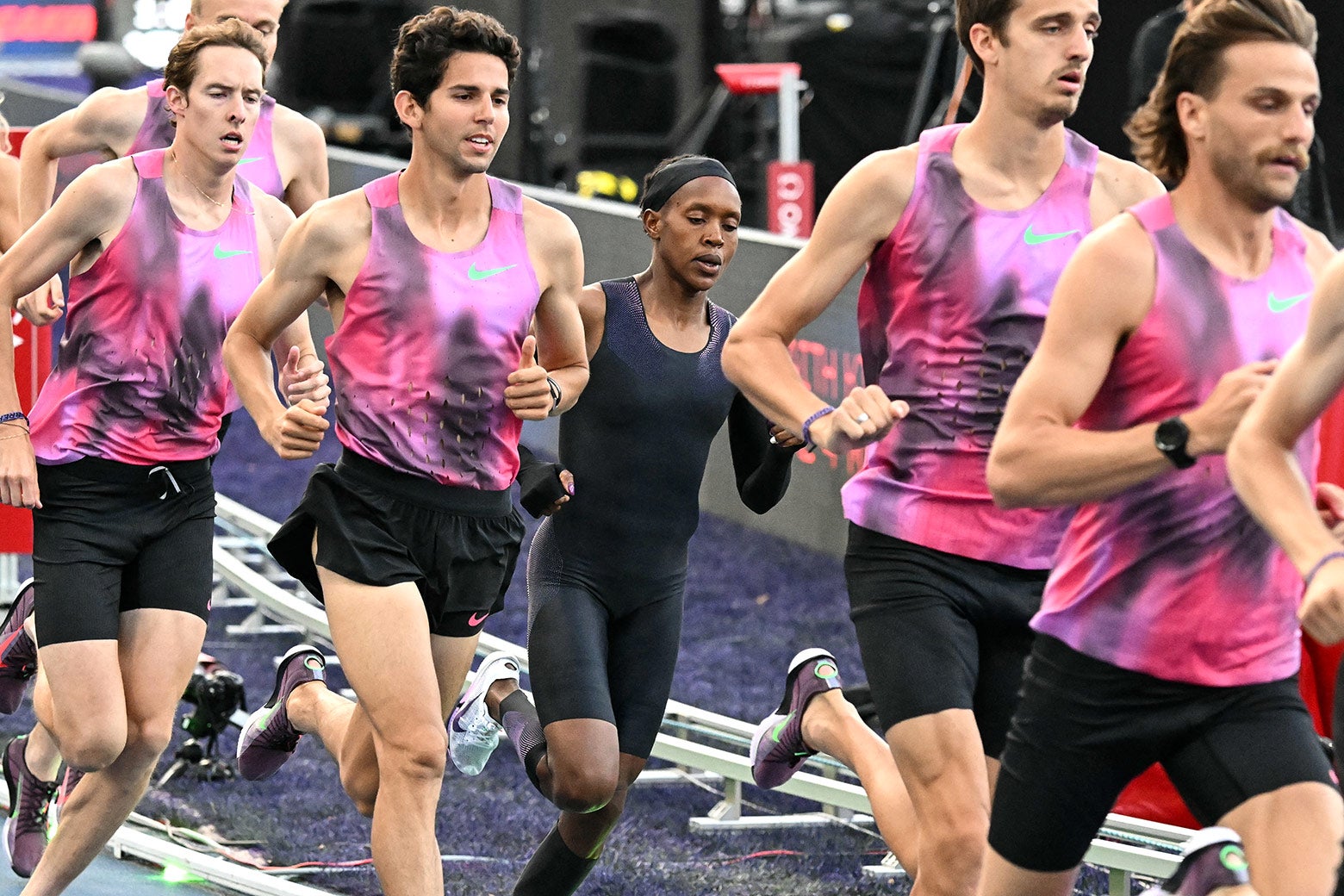PARIS – On Thursday, Faith Kipyegon attempted an unprecedented feat in women’s athletics: running a mile in under four minutes. Although she didn’t succeed, the event has sparked a broader conversation about the intersection of sports, science, and marketing.
Immediate Impact
The event, held in Paris, was billed as a breakthrough moment for women’s sports. Kipyegon’s attempt to break the four-minute mile was surrounded by intense media coverage and corporate sponsorship. Despite falling short, the effort highlighted how expectations can be distorted by marketing and media narratives.
Key Details Emerge
In February, a scientific study suggested that Kipyegon could potentially achieve a 3:59.37 minute mile under perfect conditions, including optimal drafting from pacers. This study was based on ambitious mathematical models and assumed she was as fit as when she set the women’s mile world record in 2023 with a time of 4:07.64.
4:07.64 – Faith Kipyegon’s world record mile time set in 2023.
The study’s authors were transparent about its limitations, noting that the sub-four-minute mile was only possible under ideal circumstances. However, the public narrative shifted when Nike organized a high-profile event for Kipyegon’s attempt, creating an impression that she was on the brink of making history.
Industry Response
Media coverage and Nike’s marketing campaign amplified the expectations, suggesting that scientific innovation was about to enable Kipyegon to break the barrier. This led to a widespread belief that she was already capable of such a feat with the right support.
“Current data are insufficient to suggest that a sub-4 minute mile is imminent.” – A more conservative analysis, co-authored by a Nike scientist.
Interestingly, a second study published in April, which presented a more cautious view, was largely absent from Nike’s promotional materials. This omission highlights the tension between scientific caution and marketing ambitions.
By the Numbers
As the event unfolded, Kipyegon did not break the four-minute barrier. She improved her personal best by 1.2 seconds but still needed over six seconds to reach the target. In the world of elite running, where races are often decided by fractions of a second, this gap was significant.
1.2 seconds – The amount by which Kipyegon improved her personal best.
Background Context
The lead-up to the event was marked by a narrative that science would make the “impossible” possible. However, this isn’t the first time that scientific studies have been inflated into marketing campaigns, only for reality to fall short. Such patterns can erode public trust in science, especially when the nuances of scientific findings are overshadowed by promotional hype.
Expert Analysis
During the broadcast, Olympic legend Carl Lewis commented, “Sometimes you have to change the rules for people that are special. We have to find a way to let the world see her excellence.” While meant as praise, this statement inadvertently reinforced the notion that women’s achievements require exceptions.
“Sometimes you have to change the rules for people that are special.” – Carl Lewis, nine-time Olympic gold medalist.
The use of male pacers, chosen for their ability to maintain a fast and steady pace, further complicated the narrative. While biologically logical, it sent a message that women’s excellence still relies on male assistance.
What Comes Next
The event was not just about Kipyegon’s talent but also about the commercialization of sports. Nike’s campaign framed her attempt as a triumph of courage, yet the underlying message risked patronizing women athletes by celebrating an unrealistic target.
Ultimately, Kipyegon’s effort should be seen in the context of her achievements, not as a failed attempt to meet an unrealistic expectation. Her journey continues to inspire, and the conversation around women’s sports and scientific advancements will undoubtedly evolve.
As the dust settles, the focus shifts back to Kipyegon’s remarkable career and the broader implications for women’s athletics. The narrative may have been driven by marketing, but the story of her perseverance remains genuinely inspiring.
